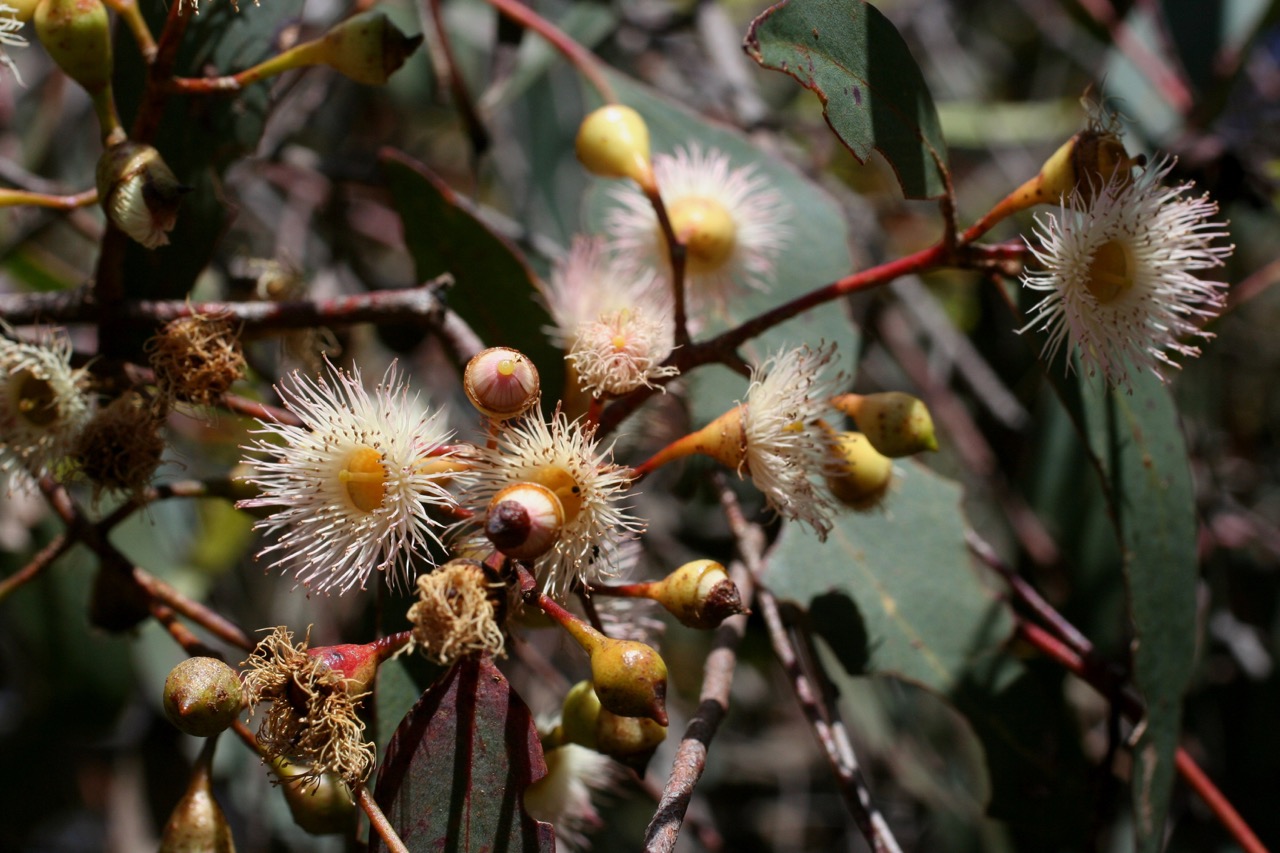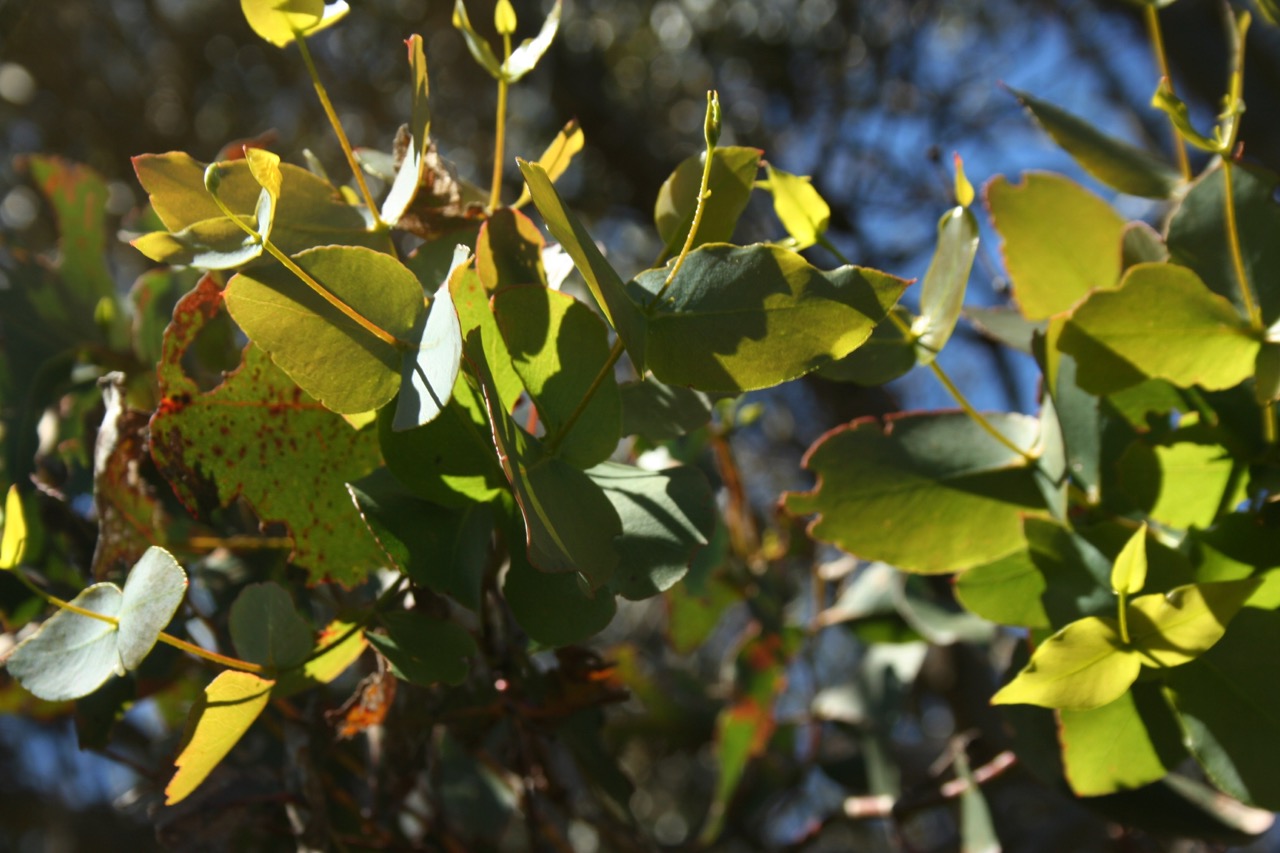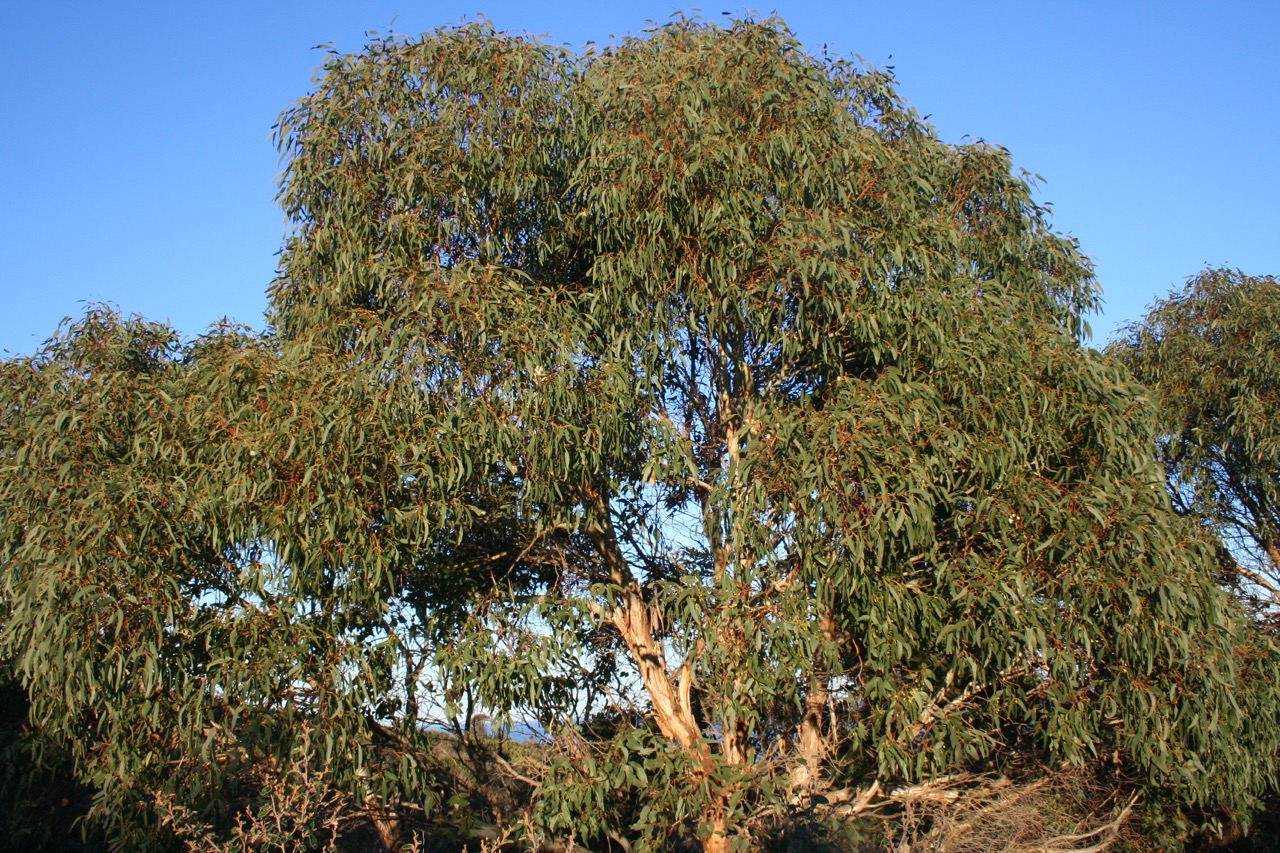



Victoria has six different subspecies of Yellow Gum with extensive distribution across Victoria.
Bellarine Yellow Gum is considered a rare, endemic species confined to the Bellarine Peninsula (where it was first described in the late 1990s) and occurs essentially as a coastal species to as far south-west as the hinterland of Bells Beach. Much of its original range has been overtaken by housing sub-divisions.
Its features are its waxy, juvenile leaves which are fused to the stem and relatively large fruits with strongly beaked caps on long pedicels (flower stems).
It varies in height from a few metres close to the coast and up to 15 metres in protected sites.
Bark is flaking on the upper part of the trunk and branches are mostly smooth and mottled; the lower trunk brownish to grey-brown, fibrous and persistent.
Adult leaves are lanceolate to broadly lanceolate and dull, bluish-green.
Flowers are white and in large clusters across the canopy. Flowering occurs from autumn to spring.
This species supports a wide range of native insects, arboreal mammals and birds.
Both sides of the leaf are one colour